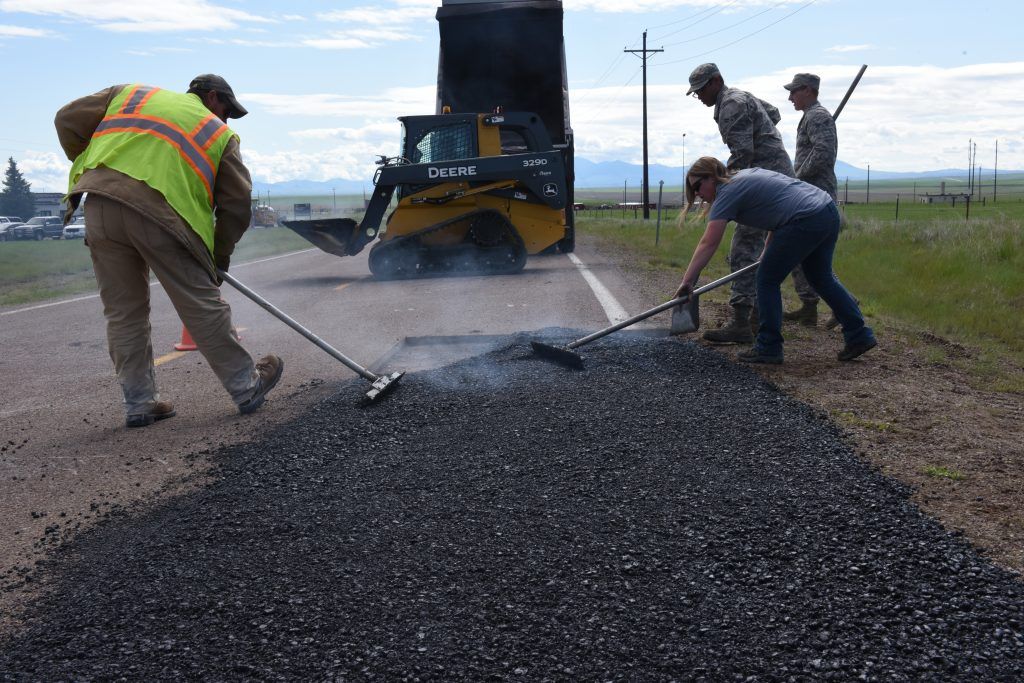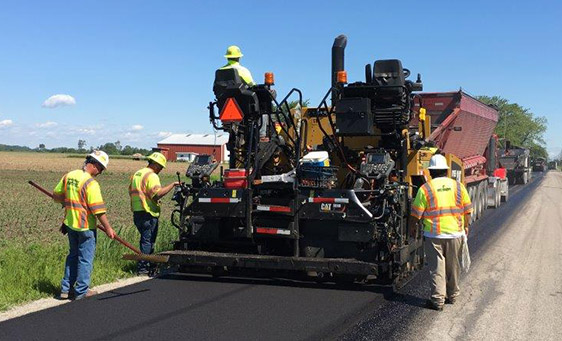Hot Mix Asphalt Paving: Elevating Commercial Parking Lot Standards
Wiki Article
Opening the Tricks of Hot Mix Asphalt Innovation
Checking out the depths of warm mix asphalt modern technology reveals a world where precise solutions and careful processes merge to form our roadways and facilities. The combination of binders, aggregates, and fillers isn't simply a building task yet a critical orchestration of durability and performance. As we peer right into the complex dancing of elements, a tapestry of resilience and sustainability unravels. What lies under this surface of asphaltic mastery, and what keys wait to be revealed in the realm of leading developments?Value of Hot Mix Asphalt
Hot Mix Asphalt plays a crucial function in modern facilities growth due to its longevity and cost-effectiveness. As the most frequently used paving product for roadways, highways, and parking area, Hot Mix Asphalt supplies a series of benefits that add to its importance in building tasks. One key advantage is its capability to hold up against rush hour lots and harsh weather condition problems, giving a reliable and lasting surface area for transport networks. In Addition, Hot Mix Asphalt is affordable in both preliminary building and construction and lasting maintenance, making it a preferred option for lots of infrastructure tasks.The sturdiness of Warm Mix Asphalt comes from its composition, that includes accumulations, binder, and filler materials that are meticulously chosen and blended to fulfill details performance demands. This specific mix leads to a strong and flexible pavement that can endure frequent usage without considerable deterioration. Warm Mix Asphalt is 100% recyclable, further enhancing its sustainability and ecological benefits. Overall, the relevance of Warm Mix Asphalt in infrastructure growth can not be downplayed, as it continues to be a keystone of contemporary construction techniques.
Parts of Asphalt Mixes
The make-up of asphalt blends is composed of carefully selected aggregates, binder, and filler materials that are vital for attaining details performance requirements. Aggregates are the primary component of asphalt mixes, offering stamina and stability. The binder, normally asphalt or asphalt concrete, holds the accumulations with each other and supplies versatility and longevity to the mix.The mix and percentage of these parts play a significant duty in establishing the top quality and efficiency of the asphalt mix. Designers very carefully create the mix to satisfy certain demands, thinking about elements like web traffic volume, environment problems, and sidewalk life expectancy. Proper selection and harmonizing of accumulations, binder, and fillers are necessary for producing sturdy, lasting asphalt sidewalks.
Mixing and Production Techniques

Once the aggregates are selected, the binder, often asphalt cement, is included in bind the products with each other. The binder's top quality and amount substantially influence the mix's flexibility, strength, and resistance to ecological variables. In addition, fillers like hydrated lime or Portland concrete might be integrated to enhance specific features of the asphalt mix, such as its workability or wetness resistance.
During production, the accumulations and binder are heated up, generally between 250-325 ° F(121-163 ° C ), to promote mixing and ensure correct finish of the aggregates. The mixing procedure should be thorough to attain a homogeneous mixture that advertises the preferred efficiency attributes of the asphalt. Various strategies, such as batch blending or drum mixing, are used to accomplish consistent and high-grade asphalt blends for construction tasks.
Elements Influencing Asphalt Performance
Elements influencing asphalt efficiency incorporate a range of variables that affect the toughness, long life, and overall high quality of asphalt sidewalks. One crucial variable is the quality of materials utilized in the asphalt mix.
Ecological conditions likewise influence asphalt efficiency. Temperature variants, wetness infiltration, and website traffic tons can all influence the structural stability of the sidewalk. Design considerations, such as sidewalk density and drainage, are crucial in guaranteeing the long-lasting efficiency of the browse this site asphalt pavement. By thoroughly taking into consideration these designers, variables and contractors can maximize asphalt efficiency and boost the life span of sidewalks.
Sustainable Practices in Asphalt Modern Technology

Additionally, the development of warm-mix asphalt (WMA) modern technologies has actually acquired grip recently. WMA enables the production and positioning of asphalt mixes at lower temperature levels compared to traditional hot-mix asphalt, causing minimized energy usage and greenhouse gas emissions. The use of permeable asphalt mixes can aid reduce stormwater drainage problems by permitting water to infiltrate via the pavement and right into the ground, promoting all-natural water filtration and recharge procedures. By applying these lasting practices, the asphalt industry can add to constructing an extra resistant and ecologically friendly framework network.
Final Thought
To conclude, warm mix asphalt technology plays an essential function in contemporary facilities advancement because of its longevity and cost-effectiveness. By meticulously stabilizing parts, using correct blending strategies, and taking into consideration different aspects, engineers can produce premium asphalt mixes that endure rush hour lots and rough climate problems. Accepting sustainable practices, such as making use of recycled products and warm-mix innovations, better boosts the ecological friendliness of asphalt technology.
Blending and production strategies in warm mix asphalt technology entail the exact combination and handling of accumulations, binder, and fillers to create a durable and high-performance asphalt mix.Aspects influencing asphalt efficiency include an array of variables that affect the sturdiness, longevity, and general quality of asphalt sidewalks. Sustainable techniques description in asphalt innovation encompass different initiatives intended at reducing the ecological impact of asphalt manufacturing and paving processes. By including reclaimed asphalt sidewalk (RAP) and recycled asphalt shingles (RAS) right into brand-new asphalt mixes, the sector can considerably lower the usage of raw products and energy, while likewise decreasing garbage dump waste.
WMA permits for the production and positioning of asphalt blends at lower temperature levels read this article contrasted to conventional hot-mix asphalt, resulting in lowered energy usage and greenhouse gas exhausts.
Report this wiki page